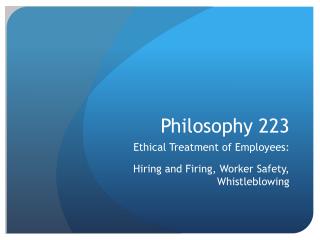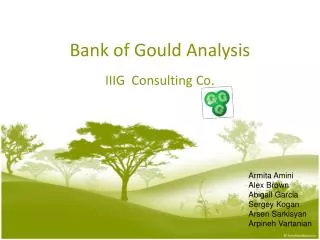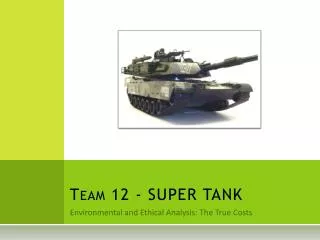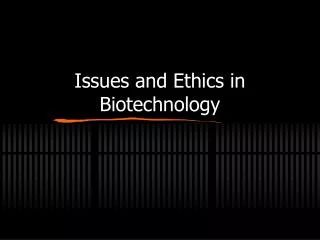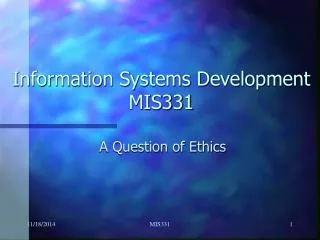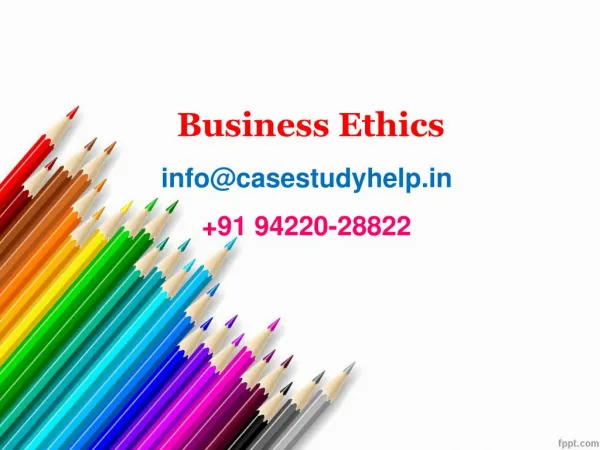Describe the three key concerns of ethical analysis of marketing issues.
For Assignment Solution Contact Casestudyhelp.in https://www.casestudyhelp.in 9422028822 Business Ethics Case 1: KFC (Marks 20) Abstract The case highlights the ethical issues involved in Kentucky Fried Chicken's (KFC) business operations in India. KFC entered India in 1995 and has been in midst of controversies since then. The regulatory authorities found that KFC's chickens did not adhere to the Prevention of Food Adulteration Act, 1954. Chickens contained nearly three times more monosodium glutamate (popularly known as MSG, a flavor enhancing ingredient) as allowed by the Act. Since the late 1990s, KFC faced severe protests by People for Ethical Treatment of Animals (PETA), an animal rights protection organization. PETA accused KFC of cruelty towards chickens and released a video tape showing the ill-treatment of birds in KFC's poultry farms. However, undeterred by the protests by PETA and other animal rights organizations, KFC planned a massive expansion program in India. BACKGROUND OF KENTUCKY FRIED CHICKEN KFC is based in Louisville, Kentucky, and is the world’s most popular chicken restaurant chain. Founded by Colonel Harland Sanders in the early 1930s by cooking & serving food for hungry travelers. In 1952 Sanders started franchising his chicken business & named it as Kentucky Fried Chicken. KFC is part of Yum! Brands, Inc., the world's largest restaurant company in terms of system restaurants, with more than 36,000 locations around the world. Yum! Brands is run by David Novak, Chairman & CEO. KFC operates more than 5,200 restaurants in the United States and more than15,000 units around the world.109 countries and territories around the world. Every day, more than 12 million customers are served at KFC restaurants. KFC Division is run by Cheryl Bach elder, President and Chief Concept Officer. KFC’s Entry in INDIA KFC was the first fast food multinational to enter INDIA, after the economic liberalization policy of the Indian Govt. in early 1990s. KFC received permission to open 30 new outlets across the country & Opened first fast food outlet in Bangalore in June 1995 by targeting upper middle class population. PepsiCo planned to open 60 KFC and Pizza Hut outlets in next 7 yrs in the country. Issues: Understand the significance of cultural, economic, regulatory and ecological issues while establishing business in a foreign country. Appreciate the need for protecting animal rights in developed and developing countries like India. Understand the importance of ethics in doing business. Examine the reasons for protests of PETA (People for Ethical Treatment of Animals). Identify solutions for KFC's problems in India Problems for KFC • Protests by farmers led by the Karnataka Rajya Ryote Sangha (KRRS) & the farmer’s leader was Nanjundaswamy who used the term “junk food” against KFC. • Protests by cultural & Economic activists. • Protests by PETA in the late 1990s. • Support of celebrities in against of KFC. SWOT ANALYSIS Strengths • Understand the Culture, Regulatory & Ecological issues. • Understand the importance of Ethics in doing business • Examine the reason for protests of PETA • Identify Solutions for KFC‟S Problems in India. Weaknesses • Non Ethical business practice. • PETA Protest. • KRRS Protest. • MSG flavour in chicken. Opportunity • Retail boom in India. • Indians youth are adopting western culture. • Indian Economy. • Cosmopolitan Rapid Development. Threats • MSG chicken flavour. • PETA like organizations. • Political parties Protesting for junk foods. • Protest support from famous Personalities like Anil Kumble, Aditi Govithrikar, John Abraham etc. Questions: 1. Since its entry in India in 1995, KFC has been facing protests by cultural & Economic activists and farmers. What are the reasons for these protests? 2. Do you think in the light of fierce competition, it is justified for business organizations not to give importance to ethical values at the cost of making profits? Why or Why not? CASE 2: THE NEW MARKET OPPORTUNITY (Marks 20) FACTS OF THE CASE China was eager to enter joint ventures with foreign companies to construct and operate automobile manufacturing plants inside China. The plants would not only manufacture cars to supply China’s new internal market, but could also make cars that could be exported for sale abroad and would be sure to generate thousands of new jobs. The Chinese government specified that the new car had to be priced at less than $5000, be small enough to suit families with a single child (couples in China are prohibited from having more than one child), rugged enough to endure the poorly maintained roads that criss-crossed the nation, generate a minimum of pollution, be composed of parts that were predominantly made within China, and be manufactured through joint – venture agreements between Chinese and foreign companies. Experts anticipated that the plants manufacturing the new cars would use a minimum of automation and would instead rely on labor – intensive technologies that could capitalize on China’s cheap labor. China saw the development of a new auto industry as a key step in its drive to industrialize its economy. The Chinese market was an irresistible opportunity for General Motors, Ford and Chrysler, as well as for the leading Japanese, European and Korean automobile companies. With a population of 1.2 billion people and almost double digit annual economic growth rates, China estimated that in the next 40 years between 200 and 300 million of the new vehicles would be purchased by Chinese citizens. Already cars had become a symbol of affluence for China’s new rising middle class, and a craze for cars had led more than 30 million Chinese to take driving lessons despite that the nation had only 10 million vehicles, most of them government – owned trucks. Environmentalists, however, were opposed to the auto manufactures’ eager rush to respond to the call of the Chinese government. The world market for energy, particularly oil, they pointed out, was based in part on the fact that China, with its large population, was using relatively low levels of energy. Critics pointed out that if China were to eventually have as many cars on the road per person as Germany does, the world would contain twice as many cars as it currently does. No matter how “ pollution – free” the new car design was, the cumulative environmental effects of that many more automobiles in the world would be formidable. Even clean cars would have to generate large amounts of carbon dioxide as they burned fuel, thus significantly worsening the greenhouse effect. Engineers pointed out that it would be difficult, if not impossible, to build a clean car for under $5000. Catalytic converters, which diminished pollution, alone cost over $200 per car to manufacture. In addition, China’s oil refineries were designed to produce only gasoline with high levels of lead. Upgrading all its refineries so they could make low-lead gasoline would require an investment China seemed unwilling to make. IDENTIFICATION OF ISSUES / PROBLEMS IN THE CASE China was eager to enter joint ventures with foreign companies to construct and operate automobile manufacturing plants inside China. The Chinese government had specified that the new car had to be priced at less than $5000, be small enough to suit families with a single child (couples in China are prohibited from having more than one child), rugged enough to endure the poorly maintained roads that criss-crossed the nation, generate a minimum of pollution, be composed of parts that were predominantly made within China, and be manufactured through joint – venture agreements between Chinese and foreign companies. Environmentalists, however, were opposed to the auto manufactures. Engineers pointed out that it would be difficult, if not impossible, to build a clean car for under $5000 because Catalytic converters, which diminished pollution, alone cost over $200 per car to manufacture. In addition, China’s oil refineries were designed to produce only gasoline with high levels of lead. Upgrading all its refineries so they could make low-lead gasoline would require an investment China seemed unwilling to make. Many government officials were also worried by the political implications of having China become a major consumer of oil. If China were to increase its oil consumption, would have to import all its oil from the same countries that other nations relied on, this would create large political, economic and military risks. INDIVIDUAL OPINION I think China should enter joint ventures with foreign companies to construct and operate automobile manufacturing plants. This would not only generate the Chinese economy to boost up but will also generate a lot of employment opportunities to the Chinese population. Also having a car which is priced at less than $5000, will suit families with a single child. So the requirement will also not fulfill only the middle class but also the poor class in some time to come. Also looking from the point of view that the arrangement for making new cars will not only cater to the Chinese internal market but also be exported to other countries. This will get foreign exchange for China which will enhance the economy. Questions: 1. In your judgment, is it wrong, from an ethical point of view, for the auto companies to submit plans for an automobile to China? Explain your answer? 2. Of the various approaches to environmental ethics outlined in this chapter, which approach sheds most light on the ethical issues raised by this case? Explain your answer. 3. Should the US government intervene in any way in the negotiations between US auto companies and the Chinese government? Explain. SECTION B (Marks 40) Attempt any 04 questions: 1. Distinguish ethical decision making from other practical decision situations. 2. Discuss the role of mission statements and codes in creating an ethical corporate culture. 3. Describe the three key concerns of ethical analysis of marketing issues. 4. Explain why ethics is important in the business environment. 5. Discuss the need for ethics in performance appraisal. For Assignment Solution Contact Casestudyhelp.in https://www.casestudyhelp.in 9422028822
★
★
★
★
★
72 views • 5 slides

